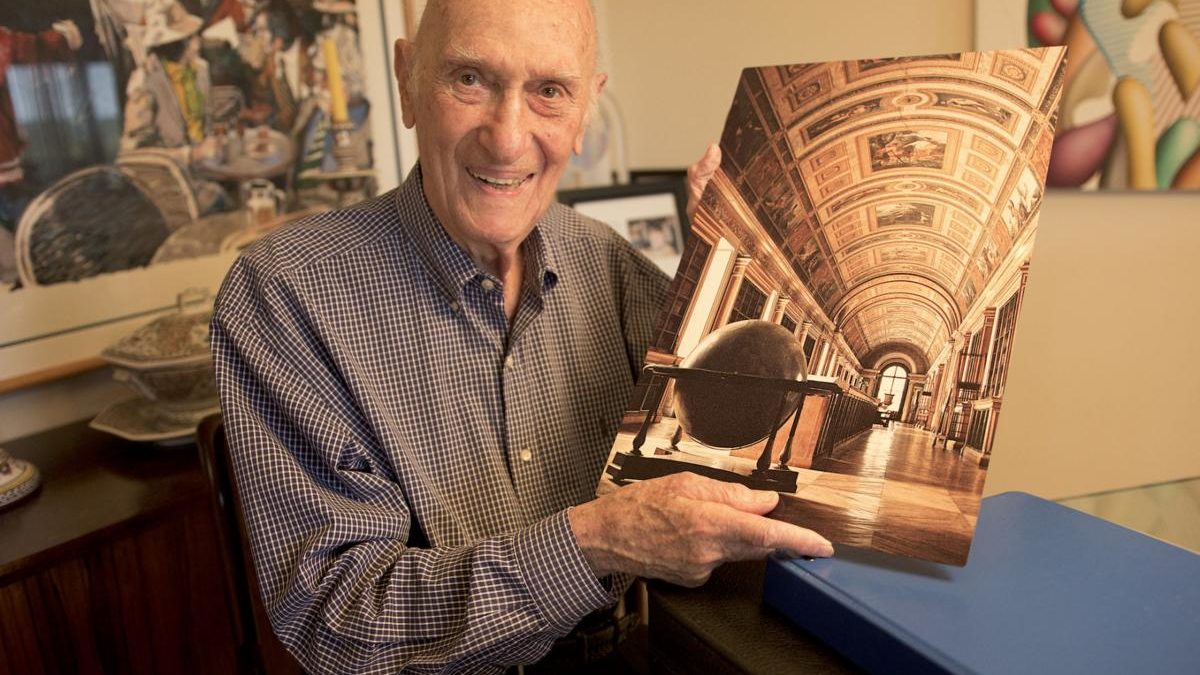It has been 74 years since it occurred, but Milton Dienes still remembers every detail of his experience as a member of the U.S. Army Air Corps 9th Photo Tech Squadron during World War II.
On August 6, 1945, the world’s first atomic bomb was dropped on the city of Hiroshima. Nagasaki soon followed just three days later on August 9.
Dienes’ responsibilities on the squad were to process and print photographs taken by pilots on the 20th Air Corp Reconnaissance and Intelligence Squadron Task Force.
“At one point, we were processing up to 14,000 pictures a day,” recalled Dienes, 95, inside his current King of Prussia home.
Sent to Nagasaki to photograph the widespread destruction a mere 100 days after the atom bomb fell, Dienes and a small group of fellow soldiers went to the city without any protection against the radiation. Despite this, he affirms that he never suffered any radiation effects.
“I mean, I don’t glow at night,” he joked.
Dienes took 50 photos home with him after being discharged from service in March of 1946. He still has the original copies of these photos to this day, and they are in nearly perfect condition, aside from maybe one or two prints.
All 50 of Dienes’ photos are featured in the Library of Congress, The Air Force Archives and The National Archives.
Ask him and Dienes doesn’t hesitate to eagerly showcase his perfectly preserved collection. While on the ground in Nagasaki, Dienes explained he only chose to focus on the bomb-ravaged buildings and streets instead of the people, primarily out of respect for those affected by the radiation.
“What’s very interesting is that none of the smokestacks fell down,” Dienes pointed out in a few photographs. “Which is pretty damn fascinating, especially considering the amount of destruction throughout the city.”
Dienes was called to serve in May 1944, which was the end of his sophomore year at Penn State, where he was a pre-med student. However, he managed to defer his enlistment because his parents were throwing a party for their anniversary, but just 30 days later, Dienes found himself along the front lines of complete destruction, armed with only his camera.
A native of Philadelphia, he was the photo editor of Central High School’s yearbook, and then a staff photographer at Penn State, which first sparked his interest in photography.
In August 2016, Colonel Dianne Hickey, the commander of Wright Air Force Base’s 14th Intelligence Squadron, located Dienes and fellow Photo Tech Squadron member Jerry Johnson and honored the duo’s bravery and supreme call to duty at the base. They both listened to and each gave speeches and spent three full days being appreciated by the current squad.
“All 200 squadron members get up and start applauding and they didn’t stop,” Dienes said, admitting this was one of the few moments in his life that found him choked up with emotion. The same for Johnson, he recalled, a man he’d never met. Hickey’s invitation brought them together, and they still keep in touch.
Dienes’ passion for photography hasn’t wavered in all those years. His extensive collection of personal photos is meticulously kept — each picture framed, signed and dated. His favorite types of photography are landscapes and floral photography. His collection also boasts plenty of portraits that manage to capture the subjects’ personalities.
Dienes’ favorite photo he’s ever taken, which he titled “World of Knowledge,” is a capture of the Galerie de Diane in Versailles, France.
“I waited until everyone left on my walking tour, I got on my hands and knees, I set the shutter speed and I got the shot,” he said. “Tripods weren’t allowed in the building, so a shot so steady, clear and in focus like this is pretty amazing for a time of all manual photography.”
Dienes’ recollection of events is impressive. Even with age, you’ll find a razor-sharp memory attached to a man extremely active in his interests. Despite suffering a stroke and going through speech therapy, he still continues to tell his stories. He most recently gave a presentation at the Freedoms Foundation in July.
“I’m not a rock star, I’m a pebble star,” he joked, choosing humility despite the fact that he’s one of just a handful of veterans that were on hand to witness one of the worst wars in humanity. Nevertheless, Dienes has played a major role in preserving those moments.
For him, that knowledge is more than enough.
TWITTER: @ALEXBNAGY




